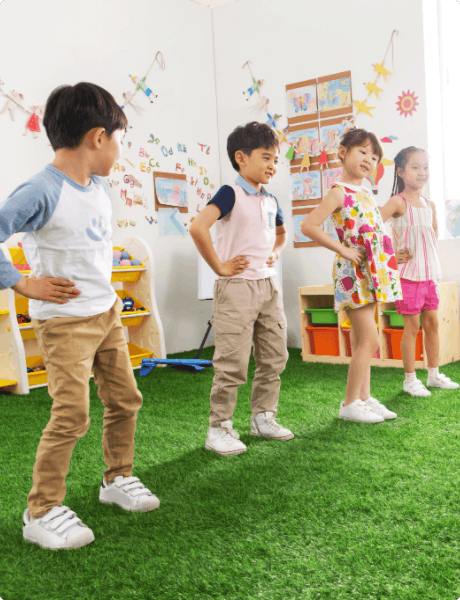
- Afrikaans
- Arabic
- Belarusian
- Bengali
- Czech
- Danish
- Dutch
- English
- Esperanto
- Estonian
- Finnish
- French
- German
- Greek
- Hindi
- Hungarian
- Icelandic
- Indonesian
- irish
- Italian
- Japanese
- kazakh
- Rwandese
- Korean
- Kyrgyz
- Lao
- Latin
- Latvian
- Malay
- Mongolian
- Myanmar
- Norwegian
- Persian
- Polish
- Portuguese
- Romanian
- Russian
- Serbian
- Spanish
- Swedish
- Tagalog
- Tajik
- Thai
- Turkish
- Turkmen
- Ukrainian
- Urdu
- Uighur
- Uzbek
- Vietnamese
artificial grass sport
Oct . 10, 2024 08:52 Back to list
The Rise of Artificial Grass in Sports
Artificial grass, often referred to as synthetic turf, has become an increasingly popular choice in the world of sports. With its ability to withstand heavy use, require minimal maintenance, and provide a consistent playing surface, synthetic turf is transforming how athletes train and compete across various sports disciplines. This article explores the advantages and disadvantages of artificial grass in sports, its applications, and its impact on the athletic experience.
Benefits of Artificial Grass
One of the primary advantages of artificial grass is its durability. Unlike natural grass, which can become worn and uneven due to weather conditions and heavy foot traffic, synthetic turf maintains its integrity regardless of external circumstances. This means that athletes can train and play on a flat, uniform surface year-round. The resilience of artificial grass is particularly beneficial in regions with harsh climates or inconsistent rainfall, where maintaining natural grass fields can be a challenge.
Another significant benefit of artificial grass is its low maintenance requirements. Natural grass needs regular mowing, watering, and fertilization, all of which can be time-consuming and costly. In contrast, synthetic turf only requires periodic cleaning and occasional infill replenishment. This not only saves time and labor but also reduces water usage, making it an environmentally friendly option, especially in areas where water conservation is a priority.
Safety is a critical consideration in sports, and artificial grass offers several features that enhance player safety. Many modern synthetic turfs are designed with shock-absorbing properties that can help reduce injuries caused by falls or impacts. This is particularly important in high-contact sports such as football or rugby, where the risk of injuries is inherently higher. Additionally, artificial grass is less prone to creating muddy or slippery conditions, which can lead to accidents and injuries.
Applications in Various Sports
artificial grass sport

The versatility of artificial grass has led to its widespread adoption across multiple sports. In soccer, for example, synthetic turf provides a reliable playing surface that can endure the rigors of constant use, making it ideal for both practice and competitive matches. Major leagues and organizations, including FIFA, have recognized the benefits of artificial grass, leading to its incorporation in professional tournaments.
Similarly, artificial grass has made significant inroads in the world of American football, rugby, field hockey, and lacrosse. Its ability to withstand harsh weather means that games can be played in diverse conditions, ensuring a more predictable experience for players and fans alike. Additionally, artificial turf fields can be customized with markings for various sports, making them suitable for multi-use facilities.
Drawbacks and Considerations
Despite its numerous advantages, artificial grass is not without its drawbacks. One of the main concerns is the heat retention of synthetic surfaces. During hot weather, artificial grass can become significantly warmer than natural grass, which can lead to discomfort for players. However, manufacturers are continually developing cooler turf options and methods for mitigating heat retention, such as incorporating cooling technologies or using lighter-colored materials.
Another consideration is the environmental impact of synthetic turf. While it reduces water consumption and maintenance, the production and disposal of artificial grass involve synthetic materials that are not biodegradable. Efforts are being made to create more sustainable options, such as recycled materials and improved end-of-life recycling programs, but this remains a topic of ongoing discussion.
Conclusion
In conclusion, artificial grass has made significant strides in the realm of sports, providing a durable, low-maintenance alternative to natural grass. Its benefits, particularly in terms of safety, versatility, and year-round usability, have made it a preferred choice for many sports organizations and athletes. However, considerations related to heat retention and environmental impact must also be addressed. As technology advances and sustainability practices improve, the future of artificial grass in sports looks promising, paving the way for a new era in athletic fields and training grounds.
-
The Benefits of Artificial Turf for Indoors
NewsJul.15,2025
-
How Artificial Grass Suppliers Ensure Quality Products
NewsJul.15,2025
-
Artificial Grass and Pets: A Space for Relaxation
NewsJul.08,2025
-
Balcony & Outdoor Decoration with Artificial Grass
NewsJul.08,2025
-
Best Indoor Artificial Grass for Home
NewsJul.07,2025
-
Best Pet Turf for Dogs: Safe & Durable Artificial Grass Options
NewsJul.07,2025
Products categories









